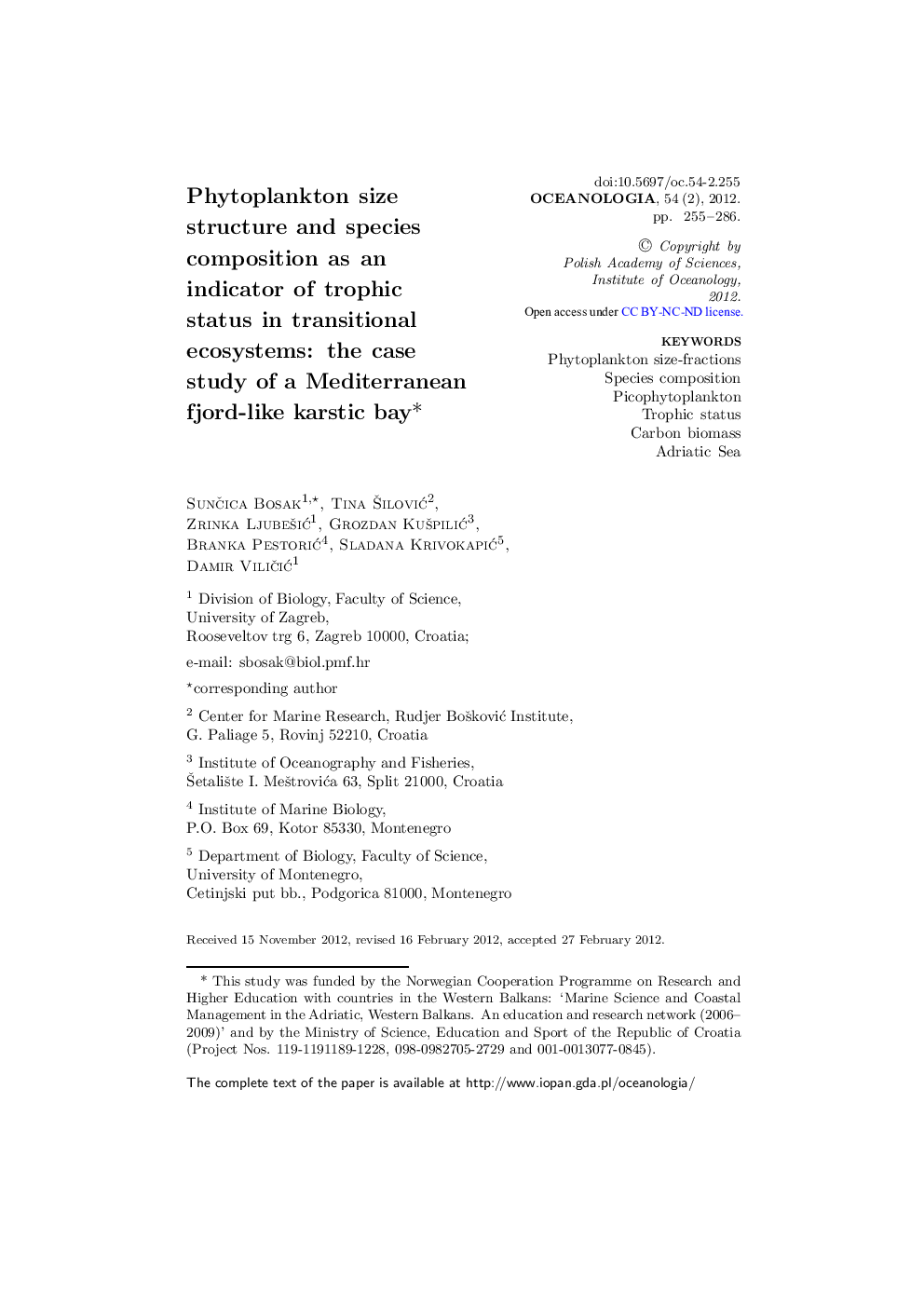| Article ID | Journal | Published Year | Pages | File Type |
|---|---|---|---|---|
| 2069914 | Oceanologia | 2012 | 32 Pages |
The species composition and size-structure of the phytoplankton community in the Boka Kotorska Bay (SE Adriatic Sea) were analysed with respect to abundance and carbon biomass, together with the physico-chemical parameters, with the aim of evaluating the predefined oligo-mesotrophic status of this transitional water ecosystem. Three stations located in the inner part of the Bay were sampled with seasonal frequency in 2008/2009. Picophytoplankton cells were counted using flow cytometry; nanophytoplankton and microphytoplankton were identified and counted by light microscopy. The relative importance of the picoplankton in the Bay, in terms of both abundance and biomass, during all the investigated seasons emphasized their significance in the phytoplankton community. Picocyanobacteria (Synechococcus) constituted a significant part of the summer assemblages with regard to both abundance (up to 3.38 × 108 cells L− 1) and carbon biomass (up to 73% of total phytoplankton carbon). The contribution of the nanophytoplankton was found to be generally low (< 20% of the total phytoplankton carbon) in all seasons, and was dominated by autotrophic/mixotrophic flagellates. Species with a preference towards nutrient-enriched conditions, like the diatom Skeletonema marinoi, dominated the microphytoplankton fraction. S. marinoi was the most abundant in spring/winter (up to 2.86 × 106 cells L− 1) above the halocline (making a 96% contribution to the microphytoplankton). The potentially toxin-producing diatom Pseudo-nitzschia pseudodelicatissima was recorded at abundances greater than 105 cells L− 1, together with Thalassionema frauenfeldii, as well as the dinoflagellates Prorocentrum micans and the potentially harmful P. minimum. The higher values of phytoplankton biomass and the dominance of phytoplankton species or groups with preferences for nutrient-enriched conditions appear to be consistent with the oligo-mesotrophic status of this specific ecosystem.
